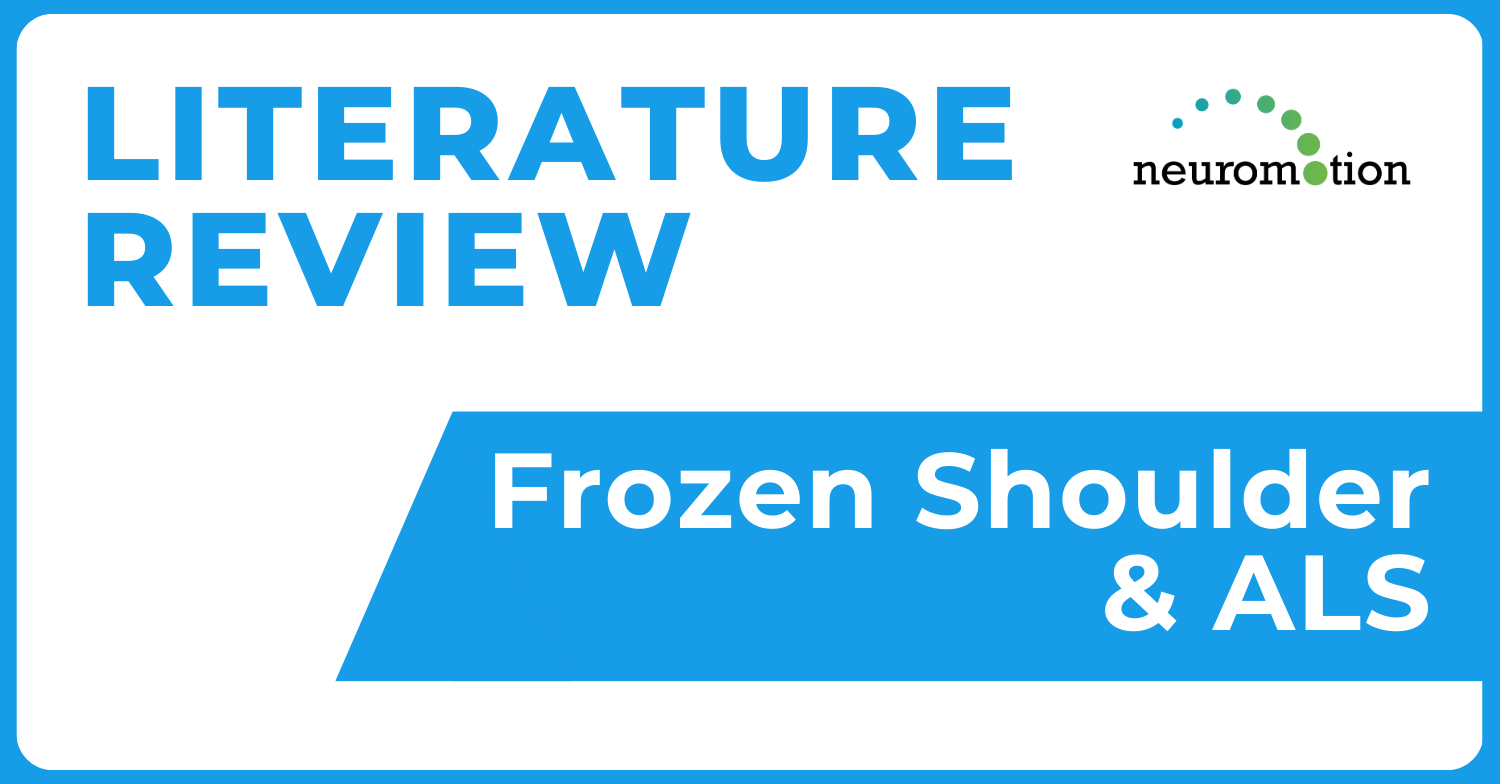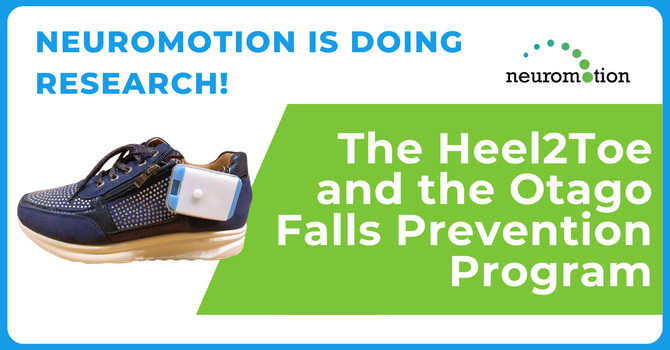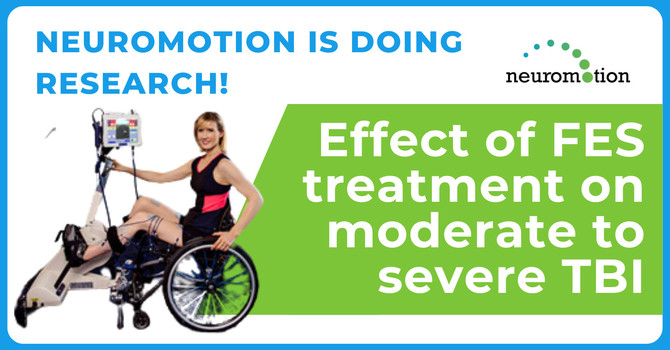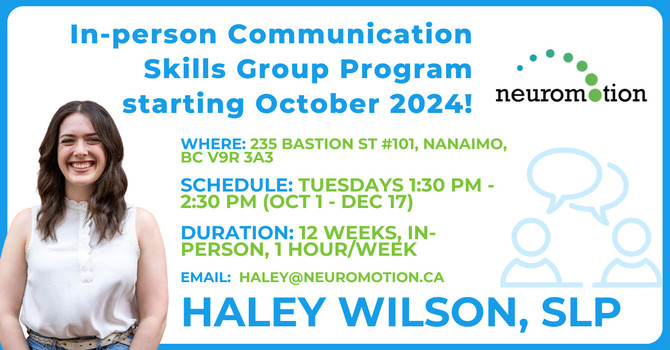
What is ALS?
ALS, or amyotrophic lateral sclerosis, is a progressive neurodegenerative disease affecting nerve cells in the brain and spinal cord, leading to muscle weakness and eventually paralysis
What is frozen shoulder?
Frozen shoulder, or adhesive capsulitis, is a painful condition related to stiffness in the shoulder joint that often results in limited mobility.
How common is shoulder pain with ALS?
Two thirds of people living with ALS have pain. Almost 40% of the pain is experienced in the shoulder. The pain can present itself as “electric shock-like pain”, cramps, and spasms. Sometimes pain can start before any other ALS symptoms, according to Delpont et al. (2017). Moisset et al. (2015) thus suggests that pain should be assessed and treated systematically, as it has an important impact on the quality of life. (Hanisch, et al., 2014)
Symptoms of frozen shoulder:
- Pain
- Muscle weakness
- Muscle atrophy
- Impingements
- Decreased range of motion
- Subluxation
What causes frozen shoulder & shoulder pain?
- Small-fibre neuropathy
- Stiffening of shoulder joint
- Inflammation of shoulder joint
- Muscle inactivity
- Joint inflammation
- Pressure on bones and joints.
Education on Frozen Shoulder in ALS:
- 50% of people living with ALS and experience shoulder pain receive treatment for frozen shoulders. . (Burke, et al., 2018)
- Interventional implementation is crucial to prevent and treat the pain, especially considering the progressive nature of ALS.
- A survey done by Burke et al. (2018) indicates that this lack of treatment is mostly due to the lack of knowledge available to clients around the effects and treatments of ALS and its symptoms.
Since little information is available in terms of treatment and management strategies, it is suggested that treatments mostly rely on clinician experience. (Burke, et al., 2018) Education regarding shoulder health and various treatment options for ALS is thus warranted for both clients and clinicians.
Treatment options:
The challenge in treating frozen shoulder in individuals with ALS lies in addressing the underlying symptoms and progression of ALS, while also managing the shoulder stiffness and pain associated with frozen shoulder. Current research focuses on the combination of treatment approaches, such as medications and physiotherapy, to improve shoulder mobility, manage pain, and address muscle weakness simultaneously.
Pharmacotherapy / Medications Options:
- Nonsteroidal anti-inflammatory drugs (NSAIDS) – for pain
- Opiates – for pain Antiepileptic drugs - for pain;
- Magnesium - for cramps;
- Levetiracetam – for ALS management
- Quinine sulphate – for ALS managements (Hanisch, et al., 2014).
- Corticosteroid injections to the glenohumeral joint – for frozen shoulder
- Botulinum toxin type A (BoNT-A) injections – shoulder pain
Physical Therapy:
Physical therapy aims to improve shoulder range of motion, reduce pain, and enhance overall functional abilities through targeted exercises and modalities (Almureef, et al., 2020).
Physical therapy is important for maintaining mobility and function in this population. And includes:
- Joint mobilizations – for joint mobility
- Soft tissue mobilizations - for shoulder stiffness
- Range of motion exercises - tailored to the individuals
Manual therapy interventions may help alleviate pain and improve shoulder function by targeting specific restrictions within the joint capsule and surrounding soft tissues.
Physical Therapy with Assistive Devices
Additionally, research into the use of assistive devices and adaptive techniques to optimize shoulder function and mobility in clients with frozen shoulder is ongoing. These devices may include:
- Slings
- Braces
- Shoulder approximation sleeves
- Transcutaneous electrical nerve stimulation (TENS)
- Heat therapy,
- Cold therapy
- Ultrasound
These modalities may help reduce pain, inflammation, and muscle spasm, thereby improving shoulder mobility and function (Słowik, et al., 2020).
Conclusion
Physical therapy interventions should be carefully tailored to the individual needs and specifications of each client, taking into account their level of progression, functional abilities, and overall goals of care. Moreover, multidisciplinary collaboration between physical therapists, occupational therapists, and healthcare providers is essential for developing comprehensive treatment plans that address the needs of clients with frozen shoulder.
References:
Almureef, S. S., Ali, W. M., Shamsi, S. & Al Zahrani, M. B., 2020. Effectiveness of Mobilization with Conventional Physiotherapy in Frozen Shoulder: A Systematic Review. International Journal of Recent Innovations in Medicine and Clinical Research, 2(4), pp. 22-29. https://ijrimcr.com/
Burke, K. M. et al., 2023. Ultrasound-Guided Glenohumeral Joint Injections For Shoulder Pain in ALS: A Case Series. Frontiers in Neurology. https://www.frontiersin.org/articles/10.3389/fneur.2022.1067418/pdf
Burke, K. et al., 2018. Exploring the Use of Educational Material About Shoulder Dysfunction: A Quality Improvement Project in People With Amyotrophic Lateral Sclerosis. Education & Administration, Volume 97, pp. 379-382. Exploring the Use of Educational Material About Shoulder Dysfunction - PMC (nih.gov)
Chiò, A., Canosa, A., Gallo, S., Moglia, C., Ilardi, A., Cammarosano, S., ... & Calvo, A. (2018). Pain in amyotrophic lateral sclerosis: a population-based controlled study. European Journal of Neurology, 25(8), 1079-1085. https://pubmed.ncbi.nlm.nih.gov/21972798/
Delpont, B. et al., 2019. Clinical Features of Pain in Amyotrophic Lateral Sclerosis: A Clinical Challenge. Revue Neurologique, 175(1-2), pp. 11-15. https://pubmed.ncbi.nlm.nih.gov/30131172/
Hanisch, F., Skdlarek, A., Berndt, J. & Kornhuber, M. E., 2014. Characteristics of Pain in Amyotrophic Lateral Sclerosis. Brain and Behaviour. https://onlinelibrary.wiley.com/doi/pdfdirect/10.1002/brb3.296?download
Hurwitz, N., Radakovic, R., Boyce, E. & Peryer, G., 2011. Prevalence of Pain in Amyotrophic Lateral Sclerosis: A Systematic Review and Meta-Analysis. Amyotrophic Lateral Sclerosis and Frontotemporal Degeneration, 22(7-8), pp. 449-458. https://www.tandfonline.com/doi/pdf/10.1080/21678421.2021.1892765
Moisset, X. et al., 2015. Is There Pain With Neuropathic Characteristics in Patients With Amyotrophic Lateral Sclerosis? A Cross-Sectional Study. Paliative Medicine. https://www.researchgate.net/profile/Xavier-Moisset/publication/280966545_Is_there_pain_with_neuropathic_characteristics_in_patients_with_amyotrophic_lateral_sclerosis_A_cross-sectional_study/links/55d3230208aec1b0429f2e5e/Is-there-pain-with-neuropathic-characteristics-in-patients-with-amyotrophic-lateral-sclerosis-A-cross-sectional-study.pdf
Sheikh, A. M. & Vissing, J., 2019. Exercise Therapy For Muscle And Lower Motor Neuron Diseases. Acta Myologica, Volume 38, pp. 215-232. https://www.ncbi.nlm.nih.gov/pmc/articles/PMC6955630/pdf/am-2019-04-215.pdf
Słowik, A. J., Milewska, M., & Bilinska, M. (2020). An Overview of Physical Therapy Methods in Amyotrophic Lateral Sclerosis. Frontiers in Neurology, 11, 574309. https://doi.org/10.3389/fneur.2020.574309
Brochure: http://links.lww.com/PHM/A544



